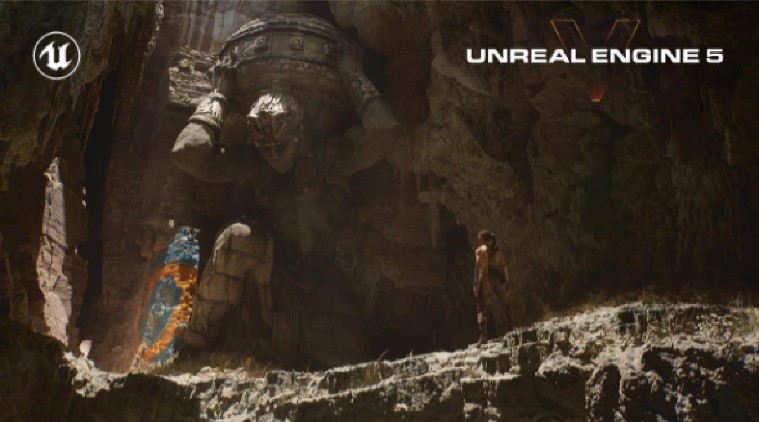 To not fall behind other game development engines like Unity, CryEngine and more, Epic Games is developing UE5. (Image: Epic Games)
To not fall behind other game development engines like Unity, CryEngine and more, Epic Games is developing UE5. (Image: Epic Games)
Epic Games on May 13 showcased its latest Unreal Engine 5, which will be made available to developers late next year to develop games for the next generation consoles including the Sony PlayStation 5 and the Xbox Series X. The first impressions suggest the company has been able to deliver on the promise of an extremely good graphic experience.
Unreal Engine has been one of the most dominant gaming engines on top of which developers have worked their magic. Currently, Unreal Engine 4 dominates PS4 and Xbox One generation with games like Mortal Kombat 11, Star Wars Jedi: Fallen Order and more.
UE4 is now over five years old but is still one of the best game development platforms there is. However, to not fall behind other game development engines like Unity, CryEngine and more, Epic Games is developing UE5, which with the help of the new Nanite and Lumen systems is nearly photorealistic.
Nanite and Lumen technologies
Both the Nanite and Lumen systems can be seen in effect inside of the real-time Lumen in the Land of Nanite demo video, embedded below. The demo was played on a PlayStation 5 to show the world how advanced the graphics look.
The Nanite technology generates ‘virtualized micropolygon geometry’, which means the engine can import billions of polygons to create realistic graphics. The introduction of the Nanite technology, according to the company, will free the developers from worrying about the polygon count and levels of detail, due to which they can create content at a movie quality level of resolution.
Lumen is a fully dynamic global illumination solution, which helps with the light introduction and handles how the games will react to scene and light changes. According to the company, it will calculate the lighting dynamics of a scene and adjust the frames accordingly. This brings in more life into the game as the light looks and reflects just like the real world.
Nanite will help developers add in the most amount of details they can into a game. Whereas, Lumen will keep a check on the lighting so that the scene looks as natural as it can.
Unreal Engine is not available as of now
Due to UE5 currently not being made available to developers, the company has announced that it will be making it backwards compatible with UE4. This will let developers use UE4.25, released on May 5 globally, to develop new games for the next-generation consoles. And after the company launches the new version, the developers will be able to easily port their games to support the new architecture.
Unreal Engine 5 solves a major problem
UE5 will solve a huge issue that a lot of the game developers face, which is budget constraints. The budget of a game decides how much time developers will be working in a particular game. This issue hits small developers the hardest as they cannot put out an extremely polished game for players to play within the time they have. To solve this problem, Epic Games has made its Quixel Megascans library free to use for all developers. This allows devs to take up a lot of stencil content from the library, thus reducing the time required to build that up from scratch.
How is Epic planning to increase the base of Unreal Engine?
To increase the number of developers that use UE, Epic Games has also announced that it will be collecting no royalties till the game using the platform is able to reach $1 million in sales. This decision is being implemented retroactively from January 1. This will allow Epic Games to increase the number of developers that use its platform to develop games.
As of now, we have just got a small glimpse of what the new engine can do and cannot say if it will dominate the next generation of games or not. These demos are marketing material for the firm and are intentionally packed with amazing visuals to create a huge amount of hype surrounding the product. We will have to wait to see how the games built using this engine will actually perform in real life. Take a look back at the promotional material Epic took out for the launch of Unreal Engine 4. Some games did look like the trailers, however, most of them were not as visually pleasing as was promised.